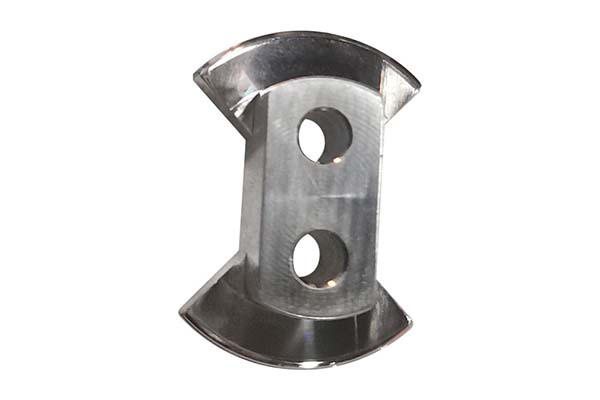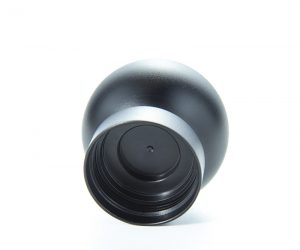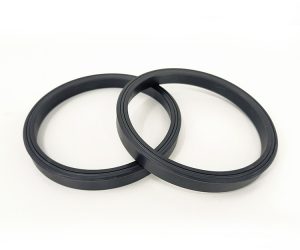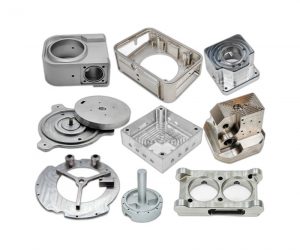1. Introduction
The significance of CNC machining in the manufacturing industry cannot be overstated. It has revolutionized the way products are made, enabling manufacturers to achieve levels of precision and efficiency that were previously unattainable. In the United States, CNC machining plays a particularly crucial role. The US manufacturing sector, known for its high - quality production across a wide range of industries such as aerospace, automotive, medical, and electronics, heavily relies on CNC machining to maintain its competitive edge.
As we explore the topic further, we will delve into the specific advantages that Yigu Technology CNC machining offers in the USA. By understanding these advantages, manufacturers, engineers, and anyone interested in the field can make more informed decisions when it comes to choosing the right manufacturing methods for their projects. We will look at how CNC machining in the USA stands out in terms of precision, efficiency, cost - effectiveness, and its ability to handle a diverse range of materials and complex designs.
2. High Precision and Tight Tolerances
2.1 Precision in Aerospace and Defense
In the aerospace and defense industries, precision is not just a desirable quality; it is an absolute necessity. The safety and performance of aircraft, spacecraft, and military equipment hinge on the accuracy of their components. For example, in aircraft engines, the turbine blades must be manufactured with extreme precision. A slight deviation in the shape or dimensions of these blades can lead to unbalanced rotation, reduced efficiency, and potentially catastrophic failures during flight.
CNC machining in the USA has proven to be the go - to solution for meeting these high - precision requirements. By using advanced CNC machines, manufacturers can achieve micron - level accuracy. These machines are capable of following complex 3 - D paths with remarkable consistency, which is crucial for creating components with intricate geometries such as the airfoils of aircraft wings. For instance, the Northrop Grumman B - 2 Spirit stealth bomber, which is a product of the US aerospace industry, has numerous components that are fabricated through CNC machining. The fuselage panels, which need to have a very smooth surface finish and precise curvature to maintain the aircraft's stealth capabilities, are machined with tolerances as tight as ±0.001 inches. This level of precision ensures that the radar - absorbing materials adhere correctly and that the overall aerodynamic performance of the aircraft is not compromised.
Another example is in the production of satellite components. In space, where equipment is exposed to extreme temperatures, radiation, and microgravity, components must be built to exact specifications. CNC - machined parts for satellites, such as the structural frames and communication antennas, are made with tolerances in the range of ±0.0005 inches. Yigu Technology precision allows the satellites to function properly in the harsh space environment and maintain their communication and navigation capabilities.
2.2 Tolerance Control in Medical Devices
In the medical device manufacturing sector, tight tolerance control is equally critical for ensuring the safety and reliability of products. Implants, such as hip and knee replacements, need to be a perfect fit within the patient's body. If the dimensions of these implants are off by even a small amount, it can cause discomfort, inflammation, and even the failure of the implant over time.
Yigu Technology CNC machining enables the production of such implants with the required precision. For example, Zimmer Biomet, a leading medical device company in the US, uses CNC machining to manufacture orthopedic implants. The femoral stems for hip replacements are machined with tolerances of ±0.002 inches. This tight tolerance ensures that the implant can be properly inserted into the femur bone, providing a stable and long - lasting solution for patients.
Surgical instruments also demand high precision. A scalpel, for instance, must have a sharp and consistent edge. CNC - machined surgical blades can have edge tolerances within ±0.0001 inches, ensuring clean and precise cuts during surgeries. This not only improves the effectiveness of the surgical procedure but also reduces the risk of complications for the patient.
Moreover, in the case of medical imaging equipment like MRI machines, the components that interact with the patient's body and generate the images need to be precisely manufactured. The coils and other internal parts are produced through CNC machining with tight tolerances to ensure accurate imaging and reliable diagnosis.
3. Enhanced Efficiency
3.1 Automation and Reduced Labor Costs
One of the most significant advantages of CNC machining in the USA is its high level of automation, which leads to a substantial reduction in labor costs. In traditional machining processes, a significant amount of human labor is required to operate and monitor the machines. Workers need to be physically present to load and unload workpieces, adjust tooling, and ensure the proper functioning of the machines during the entire production process. This not only requires a large workforce but also increases the risk of human - error - induced production delays and quality issues.
In contrast, Yigu Technology CNC machining in the US is highly automated. Once the programs are set up and the machines are calibrated, they can run for extended periods with minimal human intervention. For example, many US - based CNC machining facilities are equipped with automated pallet changers, which can load and unload workpieces automatically. This allows the machines to continue production even during breaks or overnight. According to a study by the National Association of Manufacturers in the US, companies that have adopted CNC machining have been able to reduce their labor costs by an average of 30 - 40% compared to traditional machining methods.
3.2 Faster Production Cycles
CNC machining in the USA is renowned for its ability to achieve faster production cycles, which is crucial in meeting the ever - increasing demand for quick product delivery in the market. In industries such as automotive and consumer electronics, where new models and products are constantly being introduced, the speed of production can be a decisive factor in gaining a competitive edge.
The high - speed capabilities of CNC machines contribute significantly to shorter production cycles. For example, modern CNC milling machines in the US can operate at spindle speeds of up to 40,000 revolutions per minute. This allows for rapid material removal, reducing the time required to complete a machining operation. In the production of smartphone components, a CNC - machined aluminum housing that would take several hours to produce using traditional machining methods can be completed in just a few minutes with a high - speed CNC milling machine.
4. Material Versatility
4.1 Metals Processing
In the United States, CNC machining has a remarkable ability to process a wide variety of metals. Aluminum is one of the most commonly used metals in CNC machining. It is highly favored for its lightweight nature, with a density of approximately 2.7 g/cm³, which is about one - third that of steel. Yigu Technology makes it an ideal choice for applications where weight reduction is crucial, such as in the aerospace industry. For example, in the construction of aircraft fuselages and wings, aluminum alloys are extensively used. These alloys also possess a high strength - to - weight ratio, which means they can withstand significant mechanical stress while remaining relatively light.
Aço, another widely used metal, comes in various grades. Carbon steel, with its high strength and relatively low cost, is suitable for heavy - duty applications such as construction, where it is used to make structural beams and columns. Stainless steel, on the other hand, contains chromium, which gives it excellent corrosion resistance. Stainless steel grades like 304 and 316 are commonly used in the food and beverage industry for equipment such as tanks and pipes, as well as in the medical industry for surgical instruments. The tensile strength of carbon steel can range from 380 MPa for low - carbon steel to over 1000 MPa for high - strength carbon steel, while stainless steel 304 has a tensile strength of around 515 MPa.
Brass, an alloy of copper and zinc, is valued for its good electrical conductivity, making it suitable for electrical connectors and components in electrical circuits. It also has excellent corrosion resistance and machinability. In decorative applications, such as in the production of decorative hardware for doors and furniture, brass is often chosen for its attractive golden - yellow appearance. For instance, brass door handles are not only functional but also add an aesthetic appeal to buildings.
4.2 Plastics and Composites
CNC machining in the USA also demonstrates great proficiency in processing plastics and composites. Among the plastics, ABS (Acrylonitrile Butadiene Styrene) is a popular choice. It is durable, with good impact resistance, which makes it suitable for a wide range of consumer products such as smartphone cases, toy parts, and automotive interior components. ABS has a tensile strength of around 28 - 48 MPa, which allows it to withstand normal usage stresses.
Nylon is another commonly machined plastic. It has high strength, wear resistance, and chemical resistance. These properties make it an excellent material for mechanical parts like gears and bearings. In industrial machinery, nylon gears can reduce noise and vibration during operation due to their self - lubricating properties. Nylon 6,6, for example, has a tensile strength of approximately 80 - 100 MPa.
Composites, such as carbon fiber and fiberglass, are also processed using CNC machining in the US. Carbon fiber composites have an extremely high strength - to - weight ratio. They are used in high - performance applications like aerospace, where reducing weight while maintaining strength is essential. In the automotive industry, carbon fiber is used in the production of racing car bodies and high - end sports car components to improve performance. Fiberglass, on the other hand, is more cost - effective and is commonly used in marine applications for boat hulls, as well as in automotive and industrial applications for parts such as hoods and enclosures. Fiberglass composites have a lower strength compared to carbon fiber composites but still offer good strength - to - weight ratios and are highly resistant to corrosion.
5. Cost - Effectiveness in the Long Run
5.1 Initial Investment vs. Long - Term Savings
While the initial investment in CNC machining equipment in the USA can be substantial, it is essential to consider the long - term savings it offers. while a high - end five - axis CNC machining center used for complex aerospace component manufacturing can cost upwards of $1 million.
However, over time, the efficiency and productivity gains from CNC machining lead to significant cost savings. CNC machines operate with high levels of automation, reducing the need for a large workforce. As mentioned earlier, labor costs can be reduced by 30 - 40% compared to traditional machining methods. This reduction in labor expenses continues to accrue over the years of the machine's operation.
5.2 Reduced Waste and Scrap
CNC machining in the USA is highly effective in reducing material waste and scrap, which is a significant cost - saving factor. The precision of CNC machines ensures that the cutting and shaping processes are carried out with minimal deviation from the design specifications. In traditional machining, human error and the limitations of manual control often result in a higher percentage of parts being scrapped due to inaccuracies.
7. Comparison with Other Countries
7.1 Precision Comparison
When comparing the precision of CNC machining in the USA with other countries, it becomes evident that the US holds its own in the global market. Let's take a look at the following table which shows the typical precision levels achieved in different countries for CNC - machined components in the aerospace industry:
| Country | Typical Tolerance Range for Aerospace Components (inches) |
| USA | ±0.0005 - ±0.001 |
| Germany | ±0.0006 - ±0.0012 |
| Japan | ±0.0005 - ±0.0011 |
| China | ±0.0008 - ±0.0015 |
In the aerospace industry, where precision is of utmost importance, the USA has a slight edge in terms of the tightest tolerances it can achieve. For example, in the production of turbine engine components, US - based manufacturers are often able to meet tolerances as tight as ±0.0005 inches. This is crucial for ensuring the efficient operation of the engine, as even the slightest deviation can lead to performance issues and increased fuel consumption.
China, on the other hand, has been rapidly improving its CNC machining capabilities. Although the tolerance range is currently wider than that of the US, China is investing heavily in research and development to close the gap. In recent years, Chinese manufacturers have made great strides in producing high - precision components, especially in the automotive and consumer electronics industries.
7.2 Efficiency and Cost Comparison
Efficiency and cost are two other critical aspects when comparing CNC machining in different countries. The following table provides a comparison of the average production time per part and the cost per part for CNC - machined automotive engine blocks in the USA, Germany, and China:
| Country | Average Production Time per Part (hours) | Cost per Part ($) |
| USA | 5 | 500 |
| Germany | 6 | 550 |
| China | 4 | 400 |
In terms of production time, Yigu Technology China has an advantage with the shortest average production time per part. This is mainly due to its large - scale manufacturing capabilities and the use of advanced automation technologies in some of its modern manufacturing facilities. However, the cost - effectiveness of CNC machining in the USA lies not only in the production time but also in the overall quality and long - term cost savings.
8. Conclusion
In Yigu Technology conclusion, CNC machining in the USA offers a plethora of advantages that have solidified its position as a cornerstone of the manufacturing industry. The high precision and tight tolerances achievable through CNC machining are essential for industries such as aerospace, defense, and medical, where the slightest deviation can have significant consequences. The ability to produce components with micron - level accuracy ensures the safety, performance, and reliability of end - products.
When compared with other countries, the USA holds its own in terms of precision, efficiency, and cost - effectiveness. While some countries may have advantages in certain aspects, such as lower production costs in some cases, the overall quality, precision, and long - term cost - savings offered by CNC machining in the USA make it a preferred choice for many high - end and demanding applications.




